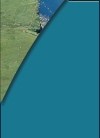(big ridge)
Dromore Castle was built by Teige O'Brien, son of the Third Earl of Thomond.
It is set in a Forest Park, besides a lake. (near Crusheen)
(Cnapog - a mound or little hill)
5 km south-east of Quin, the castle, originally a MacNamara stronghold
(built 1467) was restored in the 19th century by Lord Dunboyne. The castle
passed to the Land Commission in the late 1920s and was re-sold in 1966.
The new owner refurbished the interior in 15th century style. The castle is
open to visitors in the day-time, and at night medieval banquets take place.
Built in 1610 by the MacNamara clan. (On the N18 Limerick road.)
(or Mountcashel)
Built by Conor na Sron, King of Thomond in 1466. Situated to the north of Sixmilebridge.
Besides the Fergus estuary, the village is the site of an 0'Brien castle,
built in 1576 and occupied by the Earl of Thomond. This castle could perhaps
have given Clare County its name.
A 16th century MacNamara Castle, near Newmarket-on-Fergus. It was once the
property of the Vandeleur family and drew attention in the 19th century as
the site of a rural co-operative enterprise, the Ralahine Agricultural and
Manufacturing Co-operative Association. Unfortunately, Vandeleur ran up high
gambling debts and the Co-operative was disbanded in 1833. The castle has since
been unoccupied.
near Newmarket-on-Fergus
The O'Briens, of whom Lord Inchiquin is head, moved to Dromoland at the end
of the 17th century and remained there until 1962. This was the birthplace of
William Smith O'Brien the Young Ireland leader, who was arrested and exiled
after the abortive rising of 1848. The most recent house was built in 1862 by
James Pain and is now a luxury hotel with its own golf course.
(Mouth of the Ratty/ Ogarney River)
Originally built in 1277 by Thomas de Clare, the Norman-Irish Castle was
destroyed and rebuilt more than once in the centuries that followed.
 It was captured by the O'Brien in 1355 and remained their headquarters until
1712. The MacNamara's, a sept of the O'Briens erected its present form in 1460
but time took its toll upon the building until Viscount Gort bought it in 1954
and, with the aid of Bord Failte, had it restored by the Office of Public Works.
It was captured by the O'Brien in 1355 and remained their headquarters until
1712. The MacNamara's, a sept of the O'Briens erected its present form in 1460
but time took its toll upon the building until Viscount Gort bought it in 1954
and, with the aid of Bord Failte, had it restored by the Office of Public Works.
The Castle boasts one of the finest collections of 14th-17th century material
in these islands. The castle and its contents are now held in trust for the nation.
The establishment is managed by the Shannon Development Company,
which arranges medieval banquets on a year-round basis. The castle is open to
visitors daily during the year. Admission charge.
 A MacNamara fortified house, (1550), abandoned after the Cromwellian
Confiscation of 1653. It was restored by Tom Steele of Cullaun in early
19th century. It the passed into the hands of the Land Commission, and
was bought by John Hunt in 1965, who created the bronze-age complex: the
crannog or lake-dwelling, the ring fort and the subterrain or underground
Chamber. Later 'The Brendan', a recreation of the type of leather currachs
used by St. Brendan the Navigator in 6th century was added.
A MacNamara fortified house, (1550), abandoned after the Cromwellian
Confiscation of 1653. It was restored by Tom Steele of Cullaun in early
19th century. It the passed into the hands of the Land Commission, and
was bought by John Hunt in 1965, who created the bronze-age complex: the
crannog or lake-dwelling, the ring fort and the subterrain or underground
Chamber. Later 'The Brendan', a recreation of the type of leather currachs
used by St. Brendan the Navigator in 6th century was added.
Previous
|


 It was captured by the O'Brien in 1355 and remained their headquarters until
1712. The MacNamara's, a sept of the O'Briens erected its present form in 1460
but time took its toll upon the building until Viscount Gort bought it in 1954
and, with the aid of Bord Failte, had it restored by the Office of Public Works.
It was captured by the O'Brien in 1355 and remained their headquarters until
1712. The MacNamara's, a sept of the O'Briens erected its present form in 1460
but time took its toll upon the building until Viscount Gort bought it in 1954
and, with the aid of Bord Failte, had it restored by the Office of Public Works. A MacNamara fortified house, (1550), abandoned after the Cromwellian
Confiscation of 1653. It was restored by Tom Steele of Cullaun in early
19th century. It the passed into the hands of the Land Commission, and
was bought by John Hunt in 1965, who created the bronze-age complex: the
crannog or lake-dwelling, the ring fort and the subterrain or underground
Chamber. Later 'The Brendan', a recreation of the type of leather currachs
used by St. Brendan the Navigator in 6th century was added.
A MacNamara fortified house, (1550), abandoned after the Cromwellian
Confiscation of 1653. It was restored by Tom Steele of Cullaun in early
19th century. It the passed into the hands of the Land Commission, and
was bought by John Hunt in 1965, who created the bronze-age complex: the
crannog or lake-dwelling, the ring fort and the subterrain or underground
Chamber. Later 'The Brendan', a recreation of the type of leather currachs
used by St. Brendan the Navigator in 6th century was added.